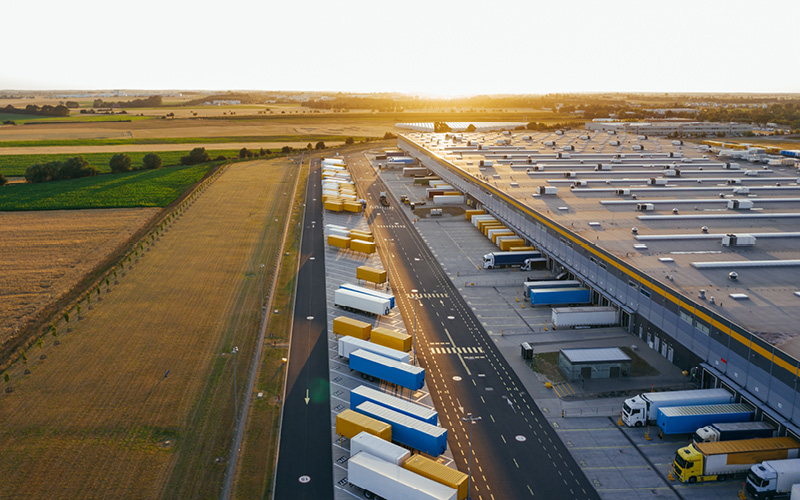One of the most (or least, depending on your point of view) fun aspects about working in the supply chain is the constant need to make accurate predictions about upcoming events, and their likelihood to present your organization with risk. Visibility into the future is key, and, with that in mind, we’ve collected a group of our supply chain experts and thought leaders from all aspects of the field to bring you our predictions for what 2023 will look like. The new year is coming soon and it’s time to get prepared.
Danny Ramon – Intelligence and Response Manager
With over a decade of experience as a supply chain intelligence professional, Danny helps our clients keep close watch over their cargo and helps keep watch over risks. He also helps organizations to respond quickly in the case of pilferage or other disaster.
Prediction 1: Supply chain disputes due to labor disputes will continue
Labor disputes have been a common phenomenon through 2022 and most of the negotiations that I’ve been tracking have only been kicking the proverbial can down the road. Most of the groups striking are doing so because their previously agreed to pay increases aren’t keeping up with the steep rate of global inflation. If inflation continues at this rate, or a similar rate, expect more demands for pay to keep up with it and a higher incidence rate of labor disputes.
Prediction 2: The continued rise of local cargo thieves will continue, and with it violence in cargo theft
As 2021 and 2022 progressed, we saw a marked increase in large-scale pilferages — often from stationary freight trains — that were performed by local thieves. This is in stark opposition to the previous norm of organized cargo theft crews capable of stealing entire tractor trailers who would often travel hundreds of miles to do so. Currently, we’re seeing a rise in thieves who are local to the area in which the pilferage takes place and who are already also engaged in other, more violent crimes. With this in mind, many aren’t afraid to use violence to deter discovery by law enforcement of civilians. We can predict that until capacity returns to pre-pandemic level (which is not likely for the foreseeable future), trains, trailers and containers that sit idle will continue to be a lucrative target for local thieves.
David Warrick – Executive Vice President
As the Executive Vice President of our enterprise team, David’s long years of experience in managing global supply chains has given Overhaul the industry leading insights that allow our products to provide our clients with new levels of visibility.
Prediction 1: Ocean rates and overall cargo rates will trend downwards
With supply now outpacing demand in the consumer sector, we are seeing continued drops in ocean rates per container. Port backlogs have also started to slowly correct and pricing is trending to a baseline of 2019’s seasonal figures for ocean transport. However, there continues to be a high burden on trucking, from high fuel costs to driver shortages which could reflect a slower recovery in terms of OTR costs.
Prediction 2: Sustainability will be a key theme for supply chains in 2023 and beyond
World Overshoot Day was on July 28th, 2022. This is the day when the resource consumption of the world’s population exceeds the Earth’s capacity to regenerate those resources in that year. As this date has been getting earlier every calendar year, there has never been a greater focus on sustainability, emissions and circularity. The ability to measure, correct and design for sustainability is now a fundamental aspect of any supply chain and will only continue to grow in importance. It’s important for every organization moving forward to remember that sustainability is not a destination, it’s a journey.
Prediction 3: A greater dependence on technology
As supply chains continue to recover, what got us to this point will no longer suffice in the future. Supply chains are becoming more complex every year, and technology is the enabler to make increasingly more complicated supply chains run smoothly. Continued automation in the physical supply chain will be complimented by automation in the digital supply chain through machine learning and artificial intelligence. We will also continue to see increased capabilities around the visibility and analytics aspects of supply chain networks due to a higher availability of real time data thanks to 5G networks. This unprecedented level of visibility and analytics capabilities will see a rise in the use of digital twins to predict disruptions and build out resiliency.
Dave Braunstein – EVP, Insurtech
Dave oversees Overhaul’s marriage of technology and insurance, and helps bring Overhaul’s insurance team’s expertise to bear. Responsible for creating Overhaul’s insurtech strategy, he also brings a technology-forward mindset to the insurtech team.
Prediction 1: Real-time digital risk management platforms (DRMP) will be adopted by many more insurance companies
As the supply chain and transportation ecosystem digitizes, the data and actionable insights created through this process are bringing real-time operational risk management closer than ever before to financial risk transfer. Loss control teams at insurance brokers and carriers are looking to find new ways to de-risk the day-to-day operations of high-value shippers which have troubling loss experiences. To combat this, many organizations are adopting DRMP technology which serves as an early warning system. DRMP technologies also help to provide a set of best practices that can be translated into actionable intelligence that is used to spot non-compliance issues and known leading indicators of loss.
Prediction 2: Inflationary pressures will drive up the total cost of risk, leading insurance companies to seek new ways to protect their profitability
Higher replacement costs for goods and the variable costs of recovering from a loss will put pressure on corporate profits, creating upward pressure on the pricing of risk by insurance companies. Deploying a DRMP platform to protect profits will begin to move from a nice-to-have, to a need-to-have. At the same time, insurance companies will start to prioritize new methods of monitoring concentration risks that make them susceptible to large-scale loss events.
Pat Stoik – Chief Risk Officer
Pat has spent his 37 years developing new ideas and pushing the envelope in the property casualty insurance business, working mainly in the cargo space. Much like his experience suggests, he works at Overhaul to ensure that carriers can mitigate as much risk as possible and that their insurers are well aware of that fact.
Prediction: Cargo insurance premiums will continue to rise in 2023
Several factors will contribute to this rise in premiums. Hazardous cargo shipments have been causing an increased number of container ship fires and the industry has struggled to prevent and mitigate their losses. Supply chain delays will also continue to be an issue for insurers as delays cause losses to cargo and reinsurers will look to recoup their losses. Furthermore, continued theft issues for high-value, high-profile cargo will again put pressure on cargo insurers to raise rates. Due to these issues, the reinsurance market is looking to increase their rates on their January 1st treaty renewal, putting further pressure on the cargo insurance market.
Pat Flynn-Cherenzia – VP, Enterprise
Pat’s deep experience in supply chain has stemmed from her long time working as a logistics manager for Microsoft. At Overhaul she’s responsible for assisting shippers and forwarders with all their risk security needs.
Prediction: Cargo and reinsurance rates will come under heavy pressure
The market is currently facing – and will be facing in the future – some significant headwinds which could influence cargo and reinsurance rates including:
- The Russo-Ukrainian War: Many reinsurers write global “composite” covers that primarily focus on the marine and energy sphere but will often include terror, trade credit, political violence and aviation/aviation war. These programs, and their reinsurers, are expected to sustain significant losses from those ancillary coverages. Due to this, there will be pressure from reinsurer’s management to secure meaningful rate rises across their portfolios, regardless of their Ukraine exposure or loss incidence.
- Inflation: There’s real concern from reinsurers about social and economic inflation. The former is less critical in the cargo space, but economic inflation is putting pressure on retention and vertical limit needs. While everyone agrees that inflationary impacts are baked into the original premiums insurers get from their clients, increased valuations will drive discussions with reinsurers about first layer attachment points and top layer pricing. There’s a possibility that the CAT/Clash layers will be more exposed and increases may follow the mindset that they will be.
- Cost of capital for marine markets: A pressing issue for providers of reinsurers has been the preponderance of “secondary perils” impacting the property CAT market. Examples of these secondary perils include the Texas freeze, the derecho in Iowa and the tornadoes in Nashville. While none of these events had a substantial impact on the marine market, they set a precedent for more static and first-party exposures on the reinsurers’ property books. With the destruction caused by Hurricane Ian, commercial marine providers may start pointing to these disasters when setting prices for their portfolios with heavy cargo components.
This isn’t to say the predictions are all doom and gloom. It’s important to remember that just because reinsurers are pushing for rate increases it doesn’t necessarily mean that they’ll be successful. I expect the magnitude of increases to have a wide variance from client to client, with a few not having to pay for any rise at all. We will all see the result together on January 1st, 2023. However, I expect at the very least that cargo rates will remain static in 2023.
If there’s anything that we can say with certainty, 2023 promises to be an interesting year for all supply chain professionals. In order to manage new risks, technologies and processes that you’ll need in order to manage them, you’re going to want to work with a partner who can provide you with unparalleled vision into your supply chain. Overhaul gives organizations the ability to track what’s going on at all times in their networks, enabling their teams to make the right decisions quickly. If you’re looking to make sure that the trials and tribulations of the coming years will be made easier, get in contact with us today.





